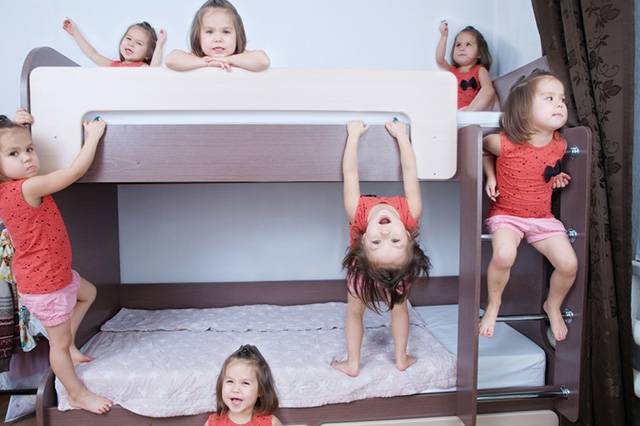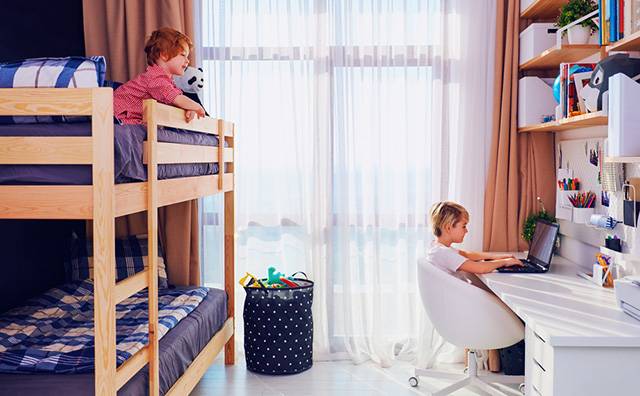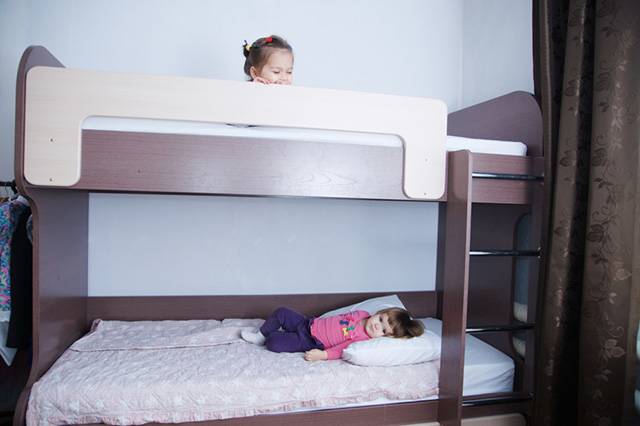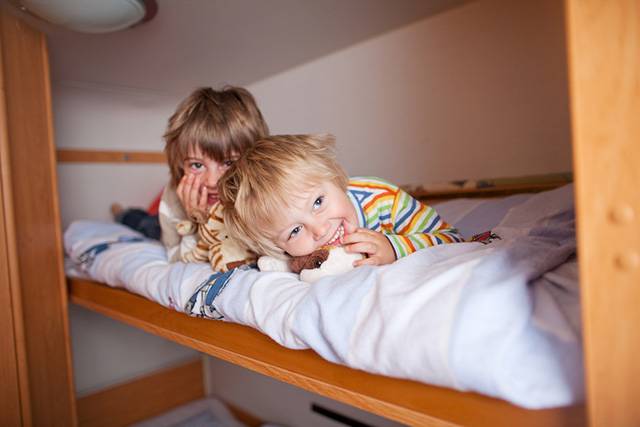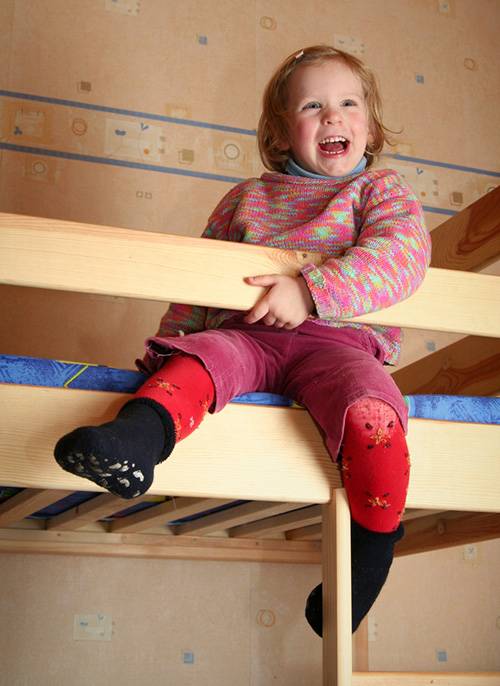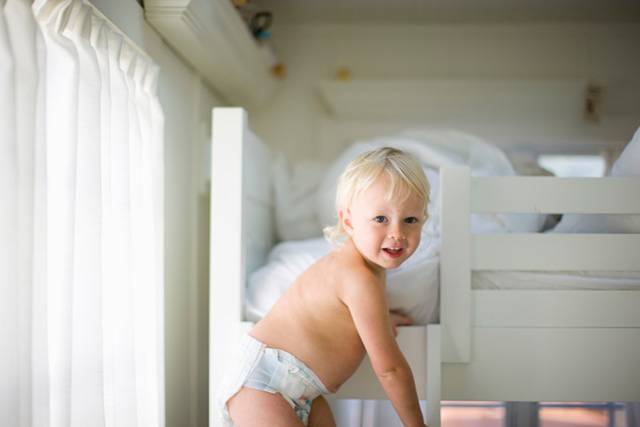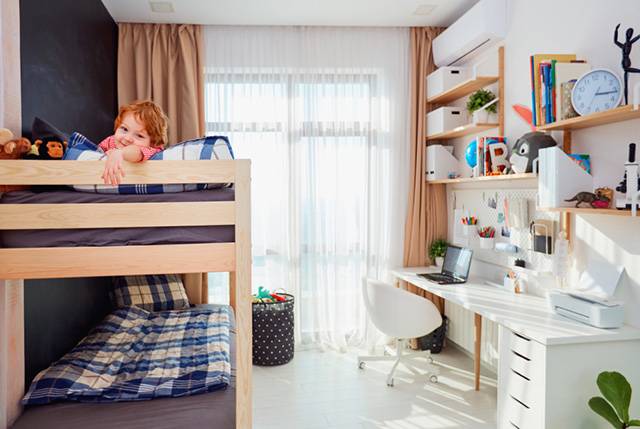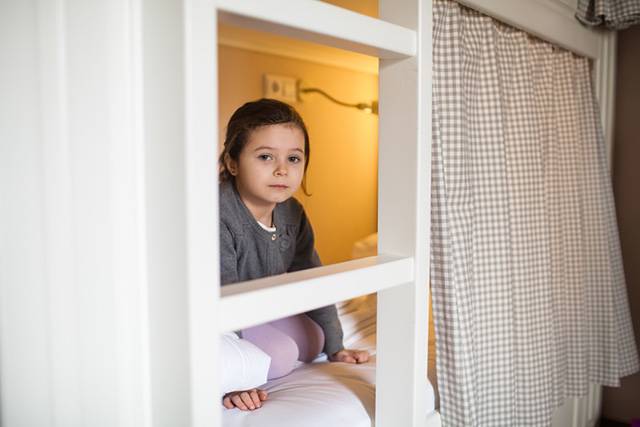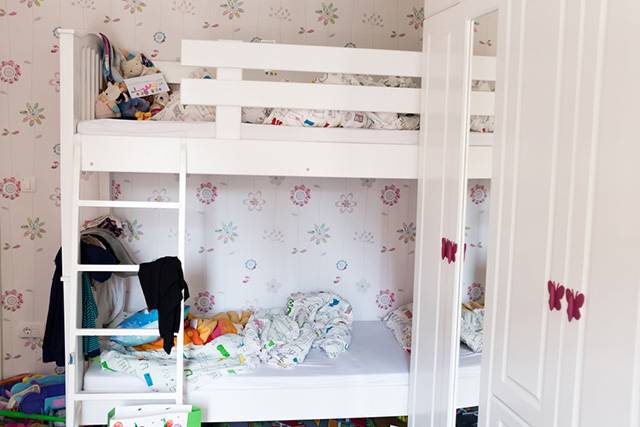Rather than go into all the details and reasoning in advance, the short end of the answer to this is, no, bunk beds are not safe for toddlers.
But before you get worried about the fact you just bought a bunk bed, view it as a great investment for your growing family, or use one due to space constraints- take a step back and read the rest of this quick article to see why you can absolutely have, and even use them, if you have a toddler in the house. You simply need to apply some common sense and safety measures.
Best Age for Bunk Bed Use
Many people choose to purchase bunk beds due to how versatile they are. They not only provide multiple sleep surfaces, but also allow for extra storage (can anyone say, plethora of stuffed animal space saver?), a guest bed option, and even many designs have built in desk and drawer space.
But when it comes to when or how they are appropriate for use, you may be worried about stories you’ve heard. The general rule of thumb is to not allow children younger than 6 to take advantage of the top bunk. Of course, children being children doesn’t rule out accidents at this age, or disobedience from younger children- but it is accepted that a 6 year old (1st grader) can understand the dangers a top bunk can pose.
Toddlers in particular are fascinated with their own discovery of the world, and their limitations are not yet understood as they learn them through trial and error. Climbing up on things presents a challenge and are exciting, and top bunks present a hazard in households that have toddlers in them. Luckily, there are some simple solutions that can help address the issue.
Bunk Bed Risks to Be Aware Of
There are few facts you may want to take into account when considering purchasing, or planning for bunk beds with a toddler in the house. For starters, over half of bunk bed injuries are with children 5 and under- hence the 6 year old age suggestions. The other biggest group of injuries are young adults between the 18 and 21 year old mark- suggesting poor bunk bed design in college and military housing. Boys are often more injured than girls.
Most injuries occur when a child rolls of a bunk during sleep (suggesting a poor bunk design) or when playing. This provides the information you need to help avoid these situations, and make them a useful, and safe option in your home.
Bunk Bed Safety Tips and Tricks
When considering the addition of a bunk bed to a bedroom, or when you have concerns with a toddler in the home, there are quite a few tips and tricks you can take advantage of to create a safer bunk bed experience.
• Lay Down Safety Rules
First and foremost, lay down safety rules concerning beds in general. Many bunk beds can be separated and so you may want to think about having them side by side and not stacked until your toddler is grown. But if that is not an option, make sure children are clear that beds are not made for jumping or playing upon. Even a regular bed results in injuries due to falls each year.
• Pay Attention to Weight Restrictions
All beds have a weight restriction guideline and everyone clambering on the top bunk is sure to test its strength. Be sure children understand only one child is supposed to be on top at a time.
• Be Sure to Use GuardRails
Guardrails should be approximately 5 inches higher than a mattress surface, and have a space too small for a child’s head to fit through.
• Remove Ladders or Place a Ladder Guard Up
Removing a ladder or placing a ladder guard on for toddlers that are fascinated by the climb is also a great way to ensure nobody will be climbing up when you aren’t watching. This is especially helpful for when you are using a bottom bunk for your toddler’s sleeping space and use the top for storage.
• Use the Proper Mattress
Incredibly important, and often overlooked, is the mattress profile being used on a top bunk. These need to be lower profile options to avoid negating the safety a guard rail provides. Be sure to measure the rail and compare it to the mattress height to ensure you have at least 5 inches of protection.
• Have a Nightlight
Make sure to illuminate the space near the ladder so those using it can clearly see where they need to place their feet during the night when nature calls. This is also a good rule of thumb in low light areas.
• Never Allow Children to Attach Anything to the Bunk
Another really important tip, one that is also often overlooked, is the attachment of anything to the bunk. Although a bunk bed has a lot of space to hang fun things from, nothing that could get caught on clothing or a body part should be attached to any part of the set-up. You want to avoid anyone being thrown off balance or tripped, or even the possibility of cutting off air circulation.
Conclusion
Bunk beds aren’t safe for toddlers, and ground rules need to be set even for older children. Proper safety awareness for children and adults is a must, as are general knowledge of protective measures- such as guardrails and mattress heights.
Of course, if the bunk is only a storage area, removing or blocking the ladder is a great solution as well. You don’t have to avoid the use of a bunk set-up just because you have a toddler, but you should take into account various scenarios to help make it a safer experience.
